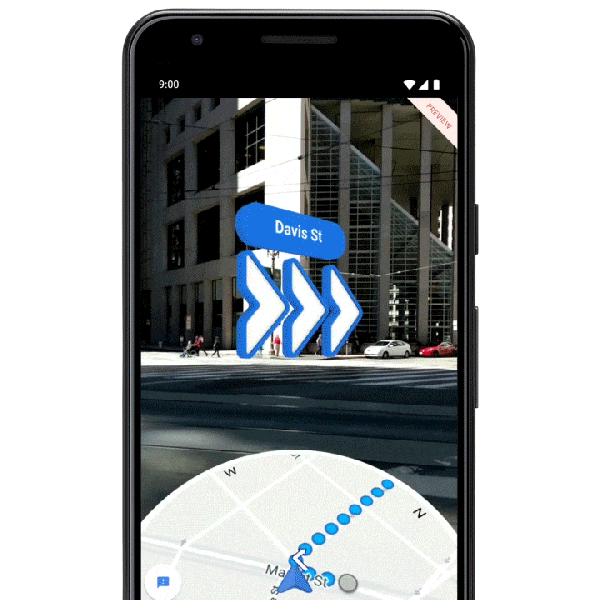Google I/O is ostensibly a developer conference, but the Mountain View company always manages to sneak in a product announcement or two. This morning during the kickoff keynote, Google announced that the augmented reality (AR) feature in Google Maps it demoed nearly a year ago — a heads-up mode that provides directions from phones’ cameras in real time — is available today in preview for the Pixel 3a, Pixel 3a XL, and older Pixel smartphones.
AR navigation was previously only available to users enrolled in the Google Maps beta who were level 5 or above in Google’s Local Guides program. As before, it’s enabled via a server-side change and requires an ARCore- and ARKit-supported smartphone.

Maps’ AR feature works sort of like this: Tapping the Start AR button kicks off navigation, and holding up the phone reveals arrows, indicators, and a live map that guide you to your final destination. Maps gets a phone’s coarse location via GPS, and it uses Street View imagery to narrow down the exact location. Google calls this technique “global localization.”
June 5th: The AI Audit in NYC
Join us next week in NYC to engage with top executive leaders, delving into strategies for auditing AI models to ensure fairness, optimal performance, and ethical compliance across diverse organizations. Secure your attendance for this exclusive invite-only event.
“[AR navigation in Google Maps] determines the location of a device based on imagery,” explained Google Maps software engineer Tilman Reinhardt in a blog post. “[It] first creates a map by taking a series of images which have a known location and analyzing them for key visual features, such as the outline of buildings or bridges, to create a large scale and fast searchable index of those visual features. To localize the device, [it] compares the features in imagery from the phone to those in the [index],” and it uses machine learning to “[prioritize] features that are likely to be permanent parts of the scene and ignoring things like trees, dynamic light movement, and construction that are likely transient.”
Google warns that “battery and cellular data consumption will be higher” in AR, and urges that users “keep aware of their surroundings.”


